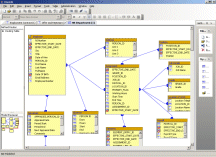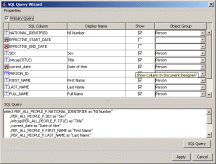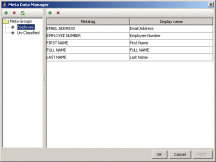|
repedo™ ONE
Synopsis
- Visual designer for data integration
- Support for JDBC and ODBC data sources
- Support for flat file based data sources
- User definable data groups
Visual Relationship Manager
repedo™ ONE incorporate real-time information into documents with the feature rich Data Modeler.
 |
Through the Visual Relationship Manager, the user has the power to diagrammatically represent business components. Just by clicking and dragging a line between two components, a relationship can be quickly added to enforce business and data rules.
Business components of differing technologies can also be linked, supporting an SQL component being linked to a Web Service component for example. |
Where there are multiple links between model components, the Visual Relationship Manager determines the best and fastest links through the diagram. It also allows the expert user to override the automatic selection and specify the preferred routes between components.
Wizard Driven Model
Both experienced and in-experienced users are catered for by the Data Modeler. Wizard based creation is at the core, allowing for rapid and concise integration to all information systems.
Users are guided through each stage of model creation, with an Export Mode for those users who wish to go a step further and include complex data manipulation. |
 |
The Information Bridge
The repedo™ ONE Data Modeler. bridges the information gap to bring real-time information into repedo™. No messy file transfers are required, or custom programs to extract information, the Data Modeler. provides documents with live and up to date information quickly and with ease.
Using JDBC technology, the Data Modeler. integrates with all the industry standard database systems. For non-database systems, the Data Modeler. is capable of linking text files, Web Services, Excel Spreadsheets and many third party products. This brings real time and accurate information from virtually any source into a data model.
 |
Data Groups
The ability to represent business items in a Data Group is a powerful user friendly feature. The data groups introduce a level of abstraction, by which a user always views the same data representation irrespective of the source of information.
By creating a uniform naming structure across different Data Models with Data Groups, users can always be presented with a consistent view of information each and every time no matter from which data model it is sourced.
|
|
